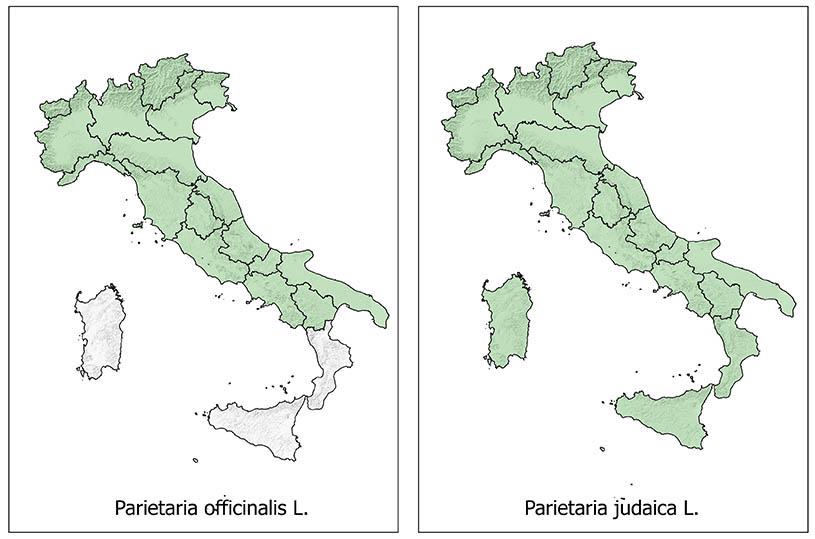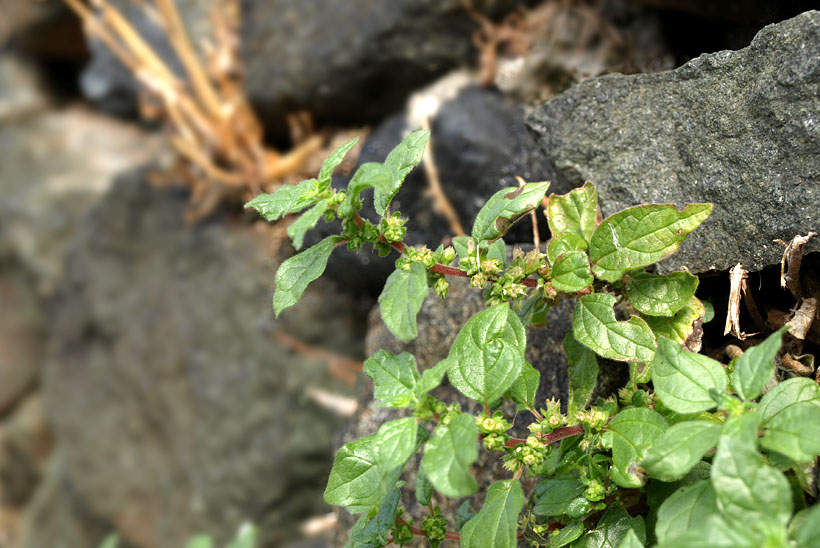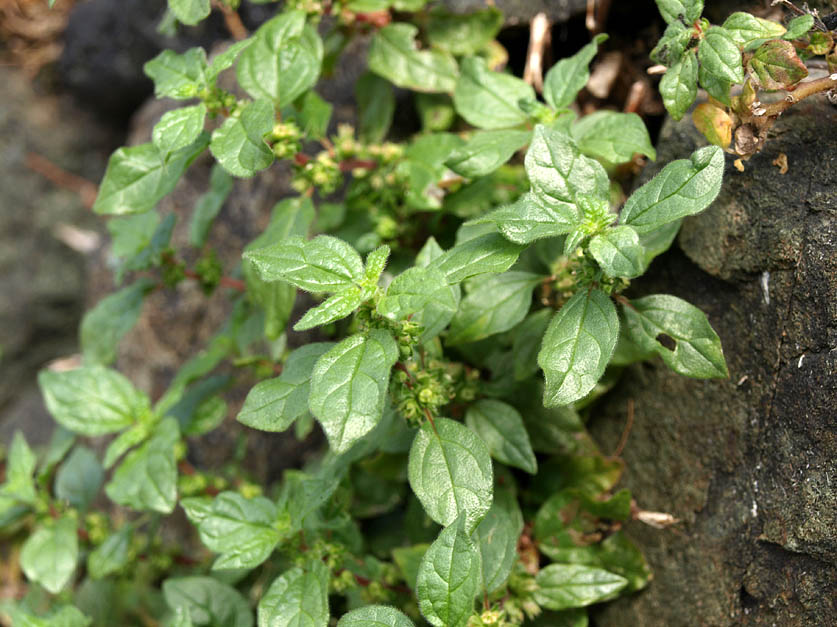
Parietaria officinalis, called pellitory-of-the-wall, upright pellitory and lichwort, is a plant of the nettle family. It is easily recognized by the leaves covered by tiny curved hairs, so that they adhere easily to your clothes (it is not the only one). The taste has a slight walnut undertone. Parietaria judaica is very similar, but slightly smaller, usually with prostrate habit. The precise key of identification lies on the bracts, but this is stuff for botanists. It really does not matter as far as edibility rate: they are both edible and acceptable good ones. Yes, they are not in my top ten ranking, but still worth trying.
Where can you find it?
The original distribution range of the Pellitory of the wall (Parietaria officinalis) extends from temperate Europe up to Ukraine. In Italy it is found in every region, but Calabria. Parietaria judaica can be found everywhere, even on islands. Both have their altitudinal range from sea levet up to 1000 m. To be honest, I find it in here (continental climate) up to 1400 m.

Habitat: both are frequently found as weeds of vegetable gardens, or growing out of cracks in old walls and pavements, roadsides and on cliffs and banks. P.officinalis prefers rich fertilized soils, P. judaica is most commonly found on old walls. But you can find them one next to the other.

When to harvest?
Fron Maj to August. In the mountains up to October.
How do I use it?
Youg leaves can be boiled for 10 minutes and used as greens, like spinach. They are good in omelettes, filling, meatballs, savory cakes.
Pellitory pollen is high allergenic. It is very small, thus it is easily transported by winds and it can penetrate deeply into respiratory tracts. It is rich in minerals, tannins, flovonoids. It is traditionally used to heal kidney and bladder stones, renal colic, cystitis, and edema.
Storage:
Cooked and frozen. Dried leaves can be used for herbal tea
Propagation:
Being an invasive weed, it is not really advisable to grow it. Just find a vegetable garden or disturbed ground and you will find it. Anyway, if you still want to grow it, it is very easy to propagate it by seed in spring.
Common names in other languages:
- IT – Erba vetriola o erba muraiola
- DE – Aufrechtes Glaskraut
- FR – Parietaire

Follow us!
Share this!